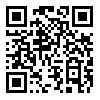Volume 9, Issue 1 (lasers in medicine 2012)
lmj 2012, 9(1): 35-37 |
Back to browse issues page
Download citation:
BibTeX | RIS | EndNote | Medlars | ProCite | Reference Manager | RefWorks
Send citation to:



BibTeX | RIS | EndNote | Medlars | ProCite | Reference Manager | RefWorks
Send citation to:
Tooth Bleaching with Laser. lmj 2012; 9 (1) :35-37
URL: http://icml.ir/article-1-243-en.html
URL: http://icml.ir/article-1-243-en.html
Abstract: (8336 Views)
Background: As a person ages, the adult teeth often become darker due to changes in the mineral structure of the tooth, as the enamel becomes less porous. Teeth can also become stained by bacterial pigments, foodstuffs and tobacco. Dental bleaching was introduced in dentistry in 1877. However, due to modern standards of beauty, this treatment modality has been in great demand and has been the subject of various scientific researches. Therefore, this procedure has undergone many changes. Nevertheless, the action mechanism remains the same, consisting of an oxide reduction reaction with release of active oxygen, free radicals in a solvent (especially water) in which the substance to be bleached donates electrons to the bleaching agent, normally hydrogen peroxide. Due to its low molecular weight, the bleaching agent penetrates through the porosities of the enamel prisms, reaches the dentin, comes into contact with a large quantity of pigmented organic molecules and breaks them up into shorter and lighter chains that allow the absorption of light in shorter wavelengths. To accelerate this process of oxidation, various sources of energy can be used, such as heat and light. Bleaching corrects or improves the color of teeth, and is also the least expensive esthetic treatment option. The indications are acquired superficial stains, penetration and absorbed stains, age-related stains, patients who desire conservative treatment to improve appearance, color change related to pulp trauma and necrosis, and interproximal discolorations.
Material and methods: A search was performed using the keywords "tooth bleaching" and "laser" to identify the current literature on the Tooth bleaching with laser. The related articles were searched in databases including IDL, Pub med, Google scholar, and Medline from 2004 to 2010.
Results: It is found that selective diode laser radiation can decrease the time of bleaching without surface modification. No differences between enamel surfaces were observed.
Discussion: Currently, the laser has been proven to be the most valuable energy source for power bleaching with simple and short application in the office.
Material and methods: A search was performed using the keywords "tooth bleaching" and "laser" to identify the current literature on the Tooth bleaching with laser. The related articles were searched in databases including IDL, Pub med, Google scholar, and Medline from 2004 to 2010.
Results: It is found that selective diode laser radiation can decrease the time of bleaching without surface modification. No differences between enamel surfaces were observed.
Discussion: Currently, the laser has been proven to be the most valuable energy source for power bleaching with simple and short application in the office.
Keywords: laser therapy, tooth bleaching
Educational: Applicable |
Subject:
General
Received: 2011/10/14 | Accepted: 2012/01/7 | Published: 2012/04/15
Received: 2011/10/14 | Accepted: 2012/01/7 | Published: 2012/04/15
| Rights and permissions | |
 |
This work is licensed under a Creative Commons Attribution-NonCommercial 4.0 International License. |



